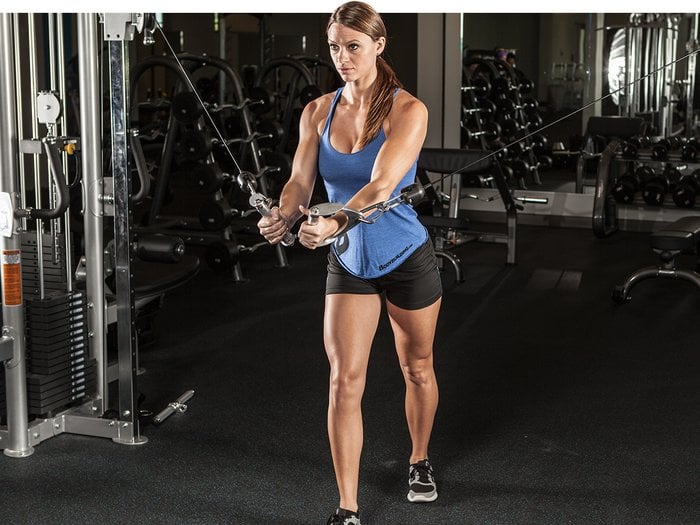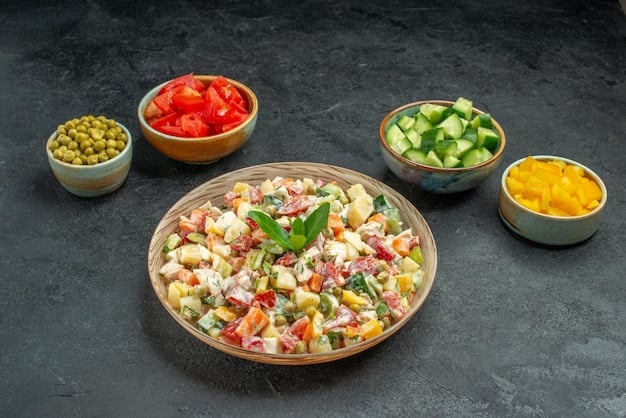Here is how beginners can track their macros!
You’re not officially a fitness and nutrition enthusiast until you learn to track macros. I’m obviously kidding, well sort of.
You see, tracking macros is that thing the in-crowd does. Amateurs and gym newbies don’t really track their macros. But people who track their macros are usually taking their fitness and nutrition seriously or at least, it comes off that way.
But anyways, you might be standing on the outside of the inner circle and you want in. You want to be cool like the fit people and more importantly, you want to master tracking macros so you can achieve a fitter physique. Plus, you probably heard that it allows you to lose weight while eating cookies. Those rumors can be true as well.
However, many people never learn to track macros because it seems overwhelming. I don’t blame you at all. It can be intimidating seeing jacked joey or big booty Brittany talk about all these numbers and weighing their food constantly.
It seems like so much work and that everyone else is so good at it. I’m here to tell you that tracking macros is far simpler than you think and getting really good doesn’t take long. Let me simplify it for you so you can join the inner circle of fitness/nutrition and more importantly, reach your goals.

How Macros Work
The first step in all of this is understanding how macros work. Some people have tracked calories before, but not macros. If that’s you, you’re already way better than you think because tracking macros is essentially tracking calories.
Calories are the energy you consume from food and burn off from your body. It’s the most important number in making sure you’re reaching your goals. For most people, they desire fat loss which means they need to consistently eat fewer calories than they burn off over time (caloric deficit).
Where does macros come into all of this? Well macros are simply the 3 main nutrients (protein, fat, and carbs) that contain calories. So if you’re aiming to eat at a certain caloric target, aiming for a certain set of macros can put you at the same target.
- Protein is 4 calories per gram
- Carbohydrates are 4 calories per gram
- Fat is 9 calories per gram
By tracking macros, you’re able to stay at a certain caloric limit, but also be in control of how much you eat of specific macronutrients that can have differing effects on your body. For example, Protein builds muscle, carbs give you energy, and fat regulates hormones.
All 3 macros do a bunch of other stuff too, but we don’t need to care about that. The goal is to keep it simple, so you can start tracking like a champ.
Setting Your Macro Targets
First, you need to find your caloric intake. There are many formulas out there and they’re all valid, but many can be needlessly complicated.
For most people, their maintenance calories is likely their bodyweight multiplied by 13 or 14. So if you desire to lose weight, you’ll need to set your calories below your maintenance which will likely be at bodyweight times 10 – 12.
You can subtract and add 50 calories to this number to give yourself a range of calories. This makes it easier to stay around your calories without worrying about having to hit one exact number on the dot. So, if your targeted calories is 1800, your caloric range can be 1750 – 1850.
Now, let’s figure out your protein. Your protein should be set at 0.8 grams per pound of bodyweight. So a 200 lb person should be chowing down 160 grams of protein daily.
Once you figure out your protein, take your protein and multiply it by 4 because protein is 4 calories per gram and subtract that from your targeted calories. The number you have remaining is what’s left for your carbs and fat.
And despite what you might hear from the endless people, your carb and fat ratio simply does not matter for most people. It will make no difference in your results.
You can focus on staying within your calories and hitting your minimum protein target daily and be perfectly fine no matter how much your carbs and fat fluctuate each day.
If you want to keep overthinking your carbs and fat, you can, but for those who are actually ready to get started, let’s move on.

The First Steps to Tracking
The first thing you will need is a food scale. No, you don’t have to weigh every little morsel out, but having it is still extremely important.
Next you will need a tracking app. Any of them will work and they all more or less do the same thing. The most popular one is Myfitnesspal, but mymacros+, fatsecret, or chronometer are all great too. Just choose one and stick with it. Now it’s time start tracking what you eat.
Tracking Foods With a Label
Most food will have a label. You simply track how much of that food you ate according to any serving size you desire. If you want to be an overachiever, weighing things out and tracking it in grams will be most accurate. Otherwise, using ounces, cups, or serving sizes is fine too.
Some foods will have to be weighed out though like if you buy a big bag of rice or pasta that you are portioning out. In addition, weighing your food dry or raw is most accurate. So, meat is weighed raw. Things like oats and rice is weighed dry.
Once you are consistent with a specific serving size, you can start eyeballing the same foods, but makes sure you are being diligent first.
Tracking Foods Without a Label
Some basic foods like apples and avocados don’t typically come with labels. Not a problem though. You can look up their nutrition info on any verified database like the USDA food database or nutritiondata.self.com.
Google is fine too. If you happen to get an inaccurate entry every now and again, it’s not the end of the world.
Tracking Recipes/Batch Foods
It’s easy to track eggs, turkey bacon, apples, chicken breast, or a spinach salad. But what if you’re making a chili for your family and you are only eating a portion of it. Or what if you are batch cooking some chicken stir fry for the week, now what do you do?
Tracking multi-ingredient recipes is a bit more nuanced, but I promise it’s still quite simple after you do it a few times. There are actually 2 ways to do so.
Method 1 (More Accurate)
- Have all your ingredient entries ready.
- Use the recipe function in your app.
- Under ingredients, log all of your ingredients.
- Cook the dish.
- Weigh your final product (with the container tared off obviously)
- Take the final weight and list the servings in grams. So if your chili is 1000 grams, you would make the recipe 1000 servings in grams.
- When you eat your portion, you will log the recipe you made in the number of grams your portion weighs.
Method 2 (Less Accurate, but easier for some people)
- Have all your ingredient entries ready.
- Use the recipe function in your app.
- Under ingredients, log all of your ingredients.
- Cook the dish.
- Split your dish into relatively even portions. Just eyeballing is fine.
- Log the recipe servings as the number of servings you made.

How to Track at Restaurants
Some restaurants like chain restaurants make tracking easy for you. They will provide you the nutrition facts for menu items on their official website. Use this to make your own custom entry.
If you are eating at a non-chain restaurant, things get a bit trickier. However, if you are eating a common dish, you can simply use the entry from a popular chain restaurant. Overestimating is smart as well.
If you are eating at restaurants that are too difficult to track, you will need to either estimate or simply not track it which is ok!
When you don’t track one social meal, you can still make progress even if your body knows it might have went over for the day. You can cut back the calories on your earlier meals to be extra safe, but ultimately, one day without a caloric deficit is not going to ruin things.
That being said, I generally recommend you stick to simpler foods most days and save complex restaurant dishes for special occasions or a once per week treat.
Now Start Tracking
Consistency will be your best friend. The more consistent you are, the more practice you will get. You will also get more reliable data to adjust. For example, if you are not seeing any progress in a few weeks of consistent tracking, you should drop your calories a bit.
But most people do not need to worry about that. They need to focus on getting started, planning their meals out, and nailing at least 2 weeks of consistent tracking. It will be eye-opening, but highly beneficial.
So get started and don’t overthink this stuff.
For more news and updates, follow Generation Iron on Facebook, Twitter, and Instagram.

